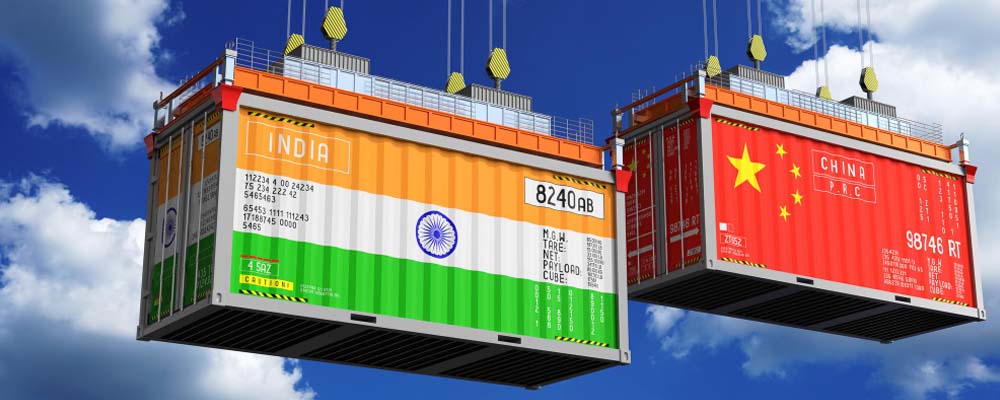
Shipping goods from China to India is a complex yet crucial process, especially for freight forwarding companies, logistics providers, and importers/exporters. Understanding the intricacies involved can significantly streamline operations, reduce costs, and ensure timely deliveries. This blog post aims to break down the essential things you need to know, offering practical insights and actionable tips to help you master this critical trade route.
Understanding Customs Regulations in India
Customs regulations are one of the most critical aspects of international shipping, and they can vary significantly from country to country.
Importance of Compliance
Compliance with customs regulations is essential for avoiding fines, delays, and legal issues. India has stringent rules for imports, and failure to adhere to these can result in severe consequences.
Documentation Requirements
When shipping from China to India, you’ll need to prepare several key documents, including the Bill of Lading, Commercial Invoice, Packing List, and Import License. Each of these documents serves a specific purpose and must be filled out accurately to ensure smooth clearance.
Duties and Taxes
India imposes various duties and taxes on imported goods. These include Basic Customs Duty (BCD), Integrated Goods and Services Tax (IGST), and Social Welfare Surcharge. Understanding these charges will help you estimate costs more accurately.
Shipping Periods from China to India
The time it takes to ship goods from China to India can vary based on several factors.
Air Freight vs. Sea Freight
Air freight is generally faster but more expensive, making it ideal for urgent shipments. Sea freight, on the other hand, is cost-effective but slower, suitable for bulk shipments.
Average Transit Times
For air freight, the average transit time is around 5-7 days, while sea freight can take anywhere from 15 to 30 days. These times can vary based on the specific ports and routes used.
Factors Affecting Transit Time
Several factors can influence transit times, including weather conditions, port congestion, and customs clearance efficiency. Having awareness of these factors can enable more effective planning.
 VAT
VAT
Value Added Tax (VAT) is another crucial aspect to consider when shipping goods internationally.
VAT in India
India’s VAT system is integrated with the GST (Goods and Services Tax). The rate can vary depending on the type of goods being imported.
Calculating VAT
To calculate VAT, you’ll need to know the taxable value of the goods and the applicable GST rate. This will assist you in anticipating any additional costs.
Exemptions and Reductions
Certain goods may be exempt from VAT or eligible for reduced rates. Knowing these can help you save money and streamline your shipping process.
Remote Area Surcharge
Shipping to remote areas can incur additional costs in the form of a Remote Area Surcharge.
What is a Remote Area Surcharge?
A Remote Area Surcharge is an extra fee imposed for delivering goods to locations that are considered difficult to reach. This can include rural areas or locations far from major transport hubs.
How to Calculate Remote Area Surcharge
Most carriers provide tools to calculate the Remote Area Surcharge based on the destination zip code. It’s advisable to check these before finalizing your shipping plans.
Minimizing Costs
To minimize these additional costs, consider consolidating shipments or using local distribution centers closer to your target market.
Restrictions
Understanding the restrictions on goods can save you from potential issues during the shipping process.
Prohibited Items
Both China and India have lists of prohibited items that cannot be shipped between the two countries. Familiarize yourself with these lists to avoid any legal complications.
Restricted Items
Certain items may be restricted and require special permits or documentation. Ensure you have all the necessary approvals before shipping such goods.
Packaging Requirements
Different goods may have specific packaging requirements to ensure they are transported safely. Adhering to these guidelines can prevent damage and delays.
Frequently Asked Questions (FAQ)
Here are some common questions that arise when shipping from China to India.
What are the most common shipping routes?
The most common shipping routes are from major Chinese ports like Shanghai, Shenzhen, and Ningbo to Indian ports such as Mumbai, Chennai, and Kolkata.
How do I track my shipment?
Most carriers offer online tracking services where you can monitor the status of your shipment in real-time. Make sure to get the tracking number from your carrier.
What should I do in case of delays?
In case of delays, contact your carrier immediately to understand the reason and find a resolution. Having a contingency plan can also help mitigate the impact of delays.
 Conclusion
Conclusion
Shipping from China to India involves navigating a complex landscape of regulations, costs, and logistical challenges. However, with the right knowledge and preparation, you can streamline the process and ensure successful deliveries. By understanding customs regulations, calculating shipping periods, and being aware of potential surcharges and restrictions, you can optimize your shipping strategy.
Ready to elevate your shipping capabilities to the next level? Contact us and get personalized advice tailored to your business needs. Let’s make your shipping process as smooth as possible!
Thank you for reading, and happy shipping!





 VAT
VAT Conclusion
Conclusion



